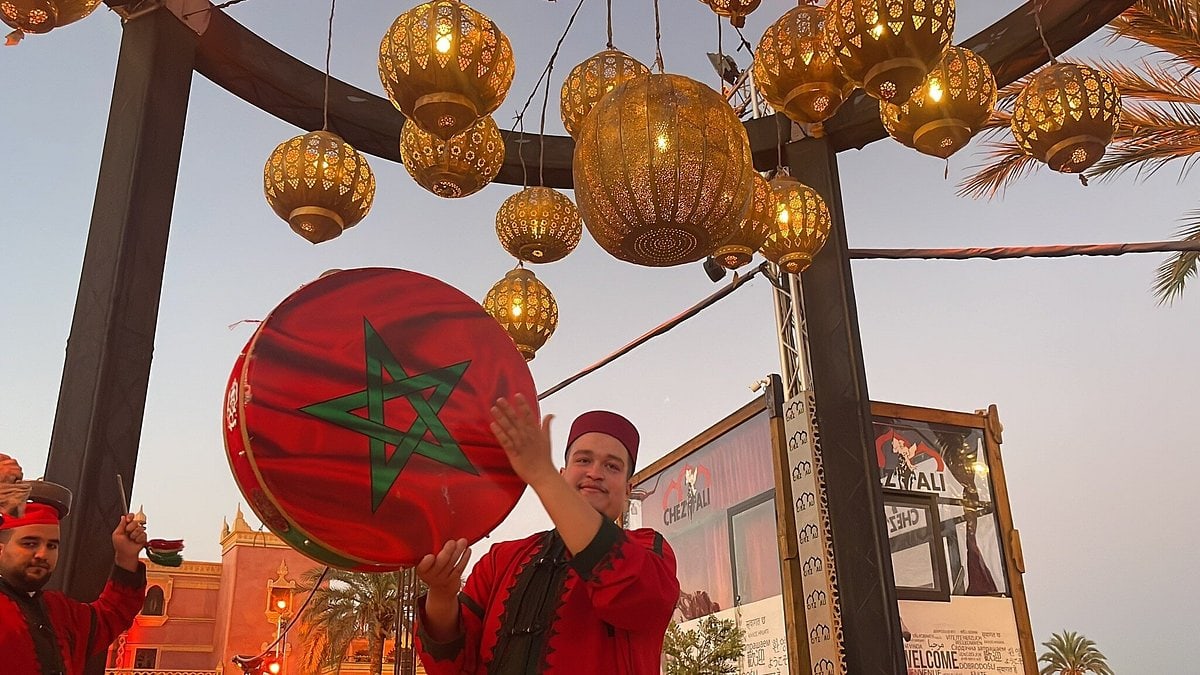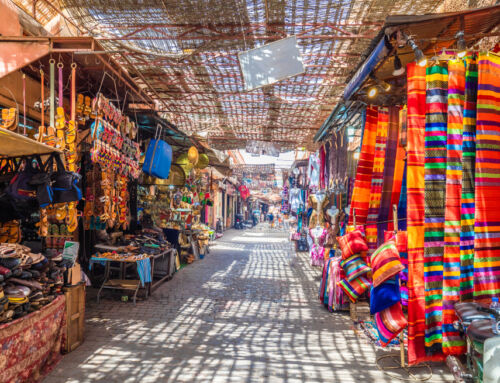Morocco is a great place to travel all year round, but the ideal time of year to go will depend on your specific needs and interests.
Travelers from the northern hemisphere swarm to North Africa during the balmy months of October through April, hoping to avoid the lengthy winters in North America or Europe. Over the remaining months of the year, Morocco is in high demand from both domestic tourists—particularly those heading along the coast in July and August—and foreign tourists taking advantage of package vacation offers and outdoor pursuits like hiking, surfing, kiteboarding, golfing, and music.
Here’s a guide to the ideal times to travel to Morocco, regardless of your reasons for visiting: the sun, surf, wind sports, outdoors, local festivals, or rich cultural heritage.
The greatest weather and least amount of people are in September
September is a terrific time to visit because both domestic and foreign visitors return to work and school following their August summer vacation. Long, bright days, mild seas, and peaceful beaches characterise the current pleasant weather. Additionally, it’s a great time to see the cultural attractions of coastal cities like Tangier, Rabat, Casablanca, Tetouan, and Essaouira. Inland, September can still be very hot in Marrakech and the neighbouring areas.
The finest seasons to visit the Sahara Desert are spring and autumn
You may visit Morocco’s share of the Sahara Desert in comfort between May and October, avoiding the summer’s scorching heat and the winter’s bitterly cold nights. If you visit in the summer, be aware that most desert campgrounds close from June to August because of the extreme heat, with temperatures reaching above 100°F. On the other hand, the winter months of December through February have shorter days and often very cold evenings and early mornings, especially if you sleep outside.
Beautiful things happen in the spring, like camel births and a green blanket of wild rocket growing on the dunes. Saharwians are accustomed to sandstorms, which happen from January to May. To shield your face from the sun and sand, don a Tuareg scarf like them.
Hiking in the High Atlas Mountains is also fantastic in the spring and autumn
The best time to walk the Atlas Mountains will depend on your level of fitness and your tolerance for difficulty. Hiking is possible all year round in the High Atlas region, although the best months to go trekking are April through June and September through November due to the mildest weather. The M’Goun Valley comes alive in May during the Festival des Roses if you happen to visit.
Be ready for the changing seasons. You will be camping in subfreezing conditions if you climb Mount Toubkal between November and June, so you might require snowshoes. The snow melts from July to October, and the elevation offers a pleasant respite from the summer heat.
December to February is Morocco’s skiing season
The High Atlas peaks are dusted with snow in the dead of winter, making them ideal for skiers who would rather ski down a mountain than trek up one. Skiing will be a great addition to your North African vacation, but the main skiing areas, Oukaimeden and Ifrane, are accessible despite the snow’s potential to cause hazardous driving conditions and road closures.
From February to April, take pleasure in anti-Atlas treks and valleys full of flowers
If you would rather walk in lower altitudes and avoid snow-capped summits, you could want to explore the Anti-Atlas mountain range. It’s the time of year for peaceful hiking paths, wildflowers, and tree blooming in spring. Tafraoute hosts an annual almond blossom celebration in February or March, depending on when the trees flower and when the harvest occurs.
The greatest months for festivals and music events are June through September
With bands and performers packing venues across the country, Morocco’s long summer nights and days make it the perfect place for outdoor music festivals. The Fez Festival of World Sacred Music (which takes place from June to September), the Gnaoua World Music Festival in Essaouira in June, the Asilah Festival in July and October, and Jazzablanca in Casablanca in June are some of the best festivals to catch.
After a three-year break, Rabat’s Mawazine, which is regarded as the largest festival in the world, is scheduled to return this year. Make reservations far in advance and be ready to pay more for lodging close to events.
October through March is the ideal time of year to surf.
The Moroccan coast experiences its most constant Atlantic swell throughout the winter. The biggest waves occur in December through February, drawing surfers to Taghazout, Mirleft, Sidi Ifni, and other locations on Morocco’s west coast. Taghazout is a vibrant hub of surf culture, holding major contests like the World Surf League in January and February, as well as an annual surf expo in October.
Travel from June to November, when conditions are perfect for beginning and intermediate surfers, if you prefer to surf in milder, mellower waves. Due to the seasonal change, May can occasionally be windy; however, this is mainly limited to the afternoons, so you can still catch some waves in the morning.
The greatest months for wind sports and kitesurfing are April through September
Because of the thermal effect along the Moroccan coast, high winds are predictable throughout this season. However, year-round kitesurfing and windsurfing are made possible by steady trade winds from the Atlantic and a number of flat water areas around Essaouira and Dakhla. Every year, near the end of September, Dakhla hosts an international kitesurfing tournament that attracts athletes and spectators from all over the world.
The best months to visit are March through May and September through November. Morocco
Go to Marrakesh in the spring or fall for bright days with moderate temps. If you are not in love with air conditioning and 100°F temperatures, stay away from June to August. With the Atlas Mountains’ magnificent snow-covered backdrop, winter is a peaceful time to explore the city outside of the Christmas holiday. However, nights from December to February can be chilly, particularly in riads (courtyard residences) without central heating.
Morocco’s ideal months to visit the coast are July and August
While summer temperatures can rise far above 100°F inland, cooler winds and foggy fog keep them at 80°F around the Atlantic shore. August is a popular month for domestic travelers because of Agadir, Dakhla, and Essaouira because of the long, sunny days and beaches that are patrolled by lifeguards.
Even though the Moroccan sun is intense, it’s easy to find beach parasols and covered outdoor seats, and the ocean is calmer and warmer, making it ideal for swimming, pedaloing, stand-up paddleboarding, and beginner surfing. If possible, choose lodging that is close to the beach by foot to avoid standing in traffic in August.
Parties and festivities are most popular around Christmas and New Year’s.
Celebrate the holidays with epic parties in Marrakesh and other famous destinations for tourists and international residents. However, from December 23 to January 8, which are the busiest travel periods, lodging costs rise noticeably. There might also be some local celebrations during the first and second week of January since Yennayer, the Amazigh New Year, falls at this time.
Morocco’s greatest times of year to go birdwatching are in the spring and October.
At many locations across the nation, migratory birds are seen making their way to and from Africa and Europe during the mild spring and fall seasons. Oualidia is the best place in the coast for birdwatching; both resident and migratory waterbird species find refuge in its tranquil lagoon. The Lake Takerkoust region and the Ourika Valley are two of the many beautiful locations in the High Atlas region where you may see migratory birds in flight. Additionally, migratory birds are drawn to Souss-Massa National Park. These birds congregate here in significant quantities both prior to and during their Atlantic crossings.
Visit Morocco in the winter or during Ramadan to avoid the crowds
Although December to February can be chilly and rainy, particularly in the north, winter is a great time to explore the city and its culture without the crowds. Additionally, note that the dates of Ramadan, the Muslim month of fasting, are subject to change annually. This significant yearly celebration is a serene and contemplative moment to visit Morocco; while many restaurants close during the day, hotel restaurants remain open.





Leave A Comment
You must be logged in to post a comment.